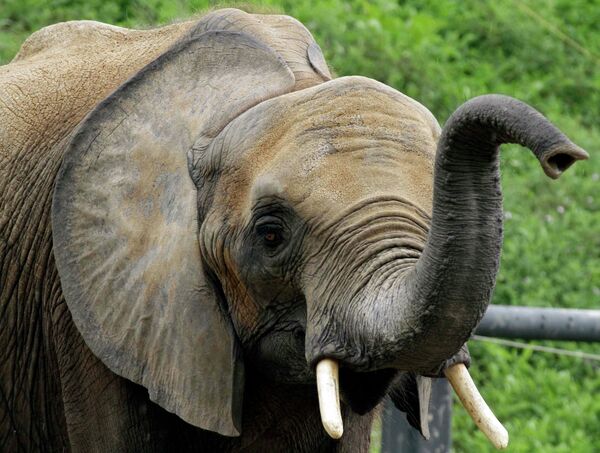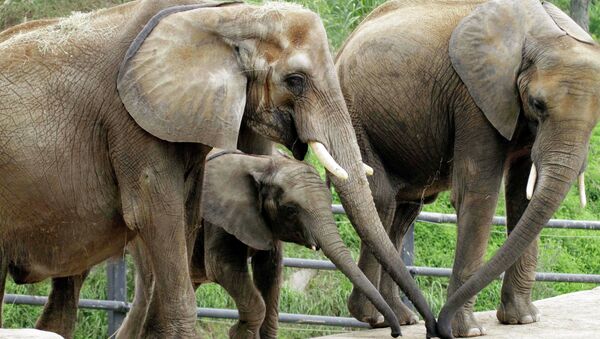WASHINGTON, February (Sputnik) — In response to a complaint from People for the Ethical Treatment of Animals, the USDA conducted an investigation into the practices at Pittsburgh Zoo & PPG Aquarium late last year.
Their report, released Monday, says that during a demonstration of the buffering technique, “the dog showed aggressive behavior, growling and lunging at one elephant, and entering its enclosure before being called by a manager.”
“The introduction of the dogs has been a valuable tool as we continue to elevate the care and management of our elephant herd,” Dr. Barbara Baker, President & CEO of the Pittsburgh Zoo, said in a statement. “The dogs read the behavior of the animals and alert the keepers to any disruption in the herd, preventing potential safety concerns for the staff and elephants.”
The report also took into account some CBS news footage which “showed the elephants exhibiting signs of distress, when charged by one of the dogs, including ear flapping, trumpeting and turning and running away.”
“All animal handling must be done in a manner that does not cause behavioral stress,” the report concluded, instructing the zoo to “correct” its practices.

Handlers at the Pittsburgh zoo started using the dogs — two Australian cattle dogs — in 2012 and zoo officials say that since then there have been no incidents of harm to elephants, dogs or handlers.
According to the USDA report, managers were clear that the dogs’ purpose was to keep handlers safe, but PETA challenges that logic, and thinks Pittsburgh should follow the example of other zoos, Like Oakland’s and San Diego’s, that use a “protected contact” method to keep handlers safe from the giant animals.
“It does not provide any modicum of safety to put a small dog in between an elephant keeper and a 15,000 lb animal who could easily kill the dog with a simple kick or a missed step,” said Brittany Peet, deputy director of captive animal law enforcement for Peta told the Guardian.
Still, the zoo pushed back, asserting that the methods it uses have been “scientifically proven and recognized by the USDA” and claiming that the drill witnessed by inspectors was meant to simulate a situation where the handler was in extreme, and unusual, distress.
“We showed how valuable the dogs can be should a keeper’s safety be in question,” said Dr. Baker.
The Pittsburgh Zoo has a bit of a dark history when it comes to elephants and safety. In 1989, one elephant handler had his leg broken while administering medication to an animal. And in 2002 a handler was killed after he fell to the ground and an elephant pressed her head against his chest, crushing him.


